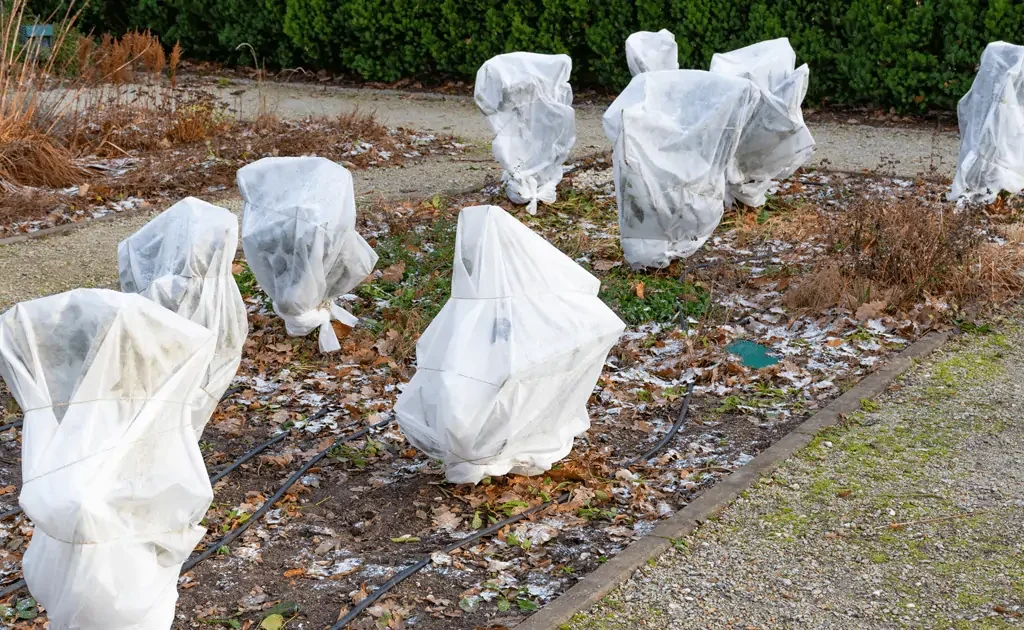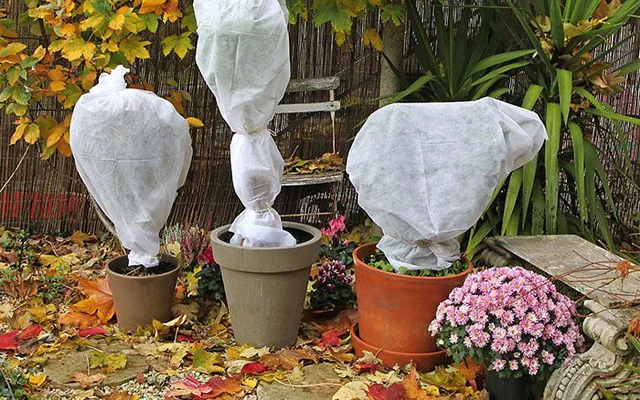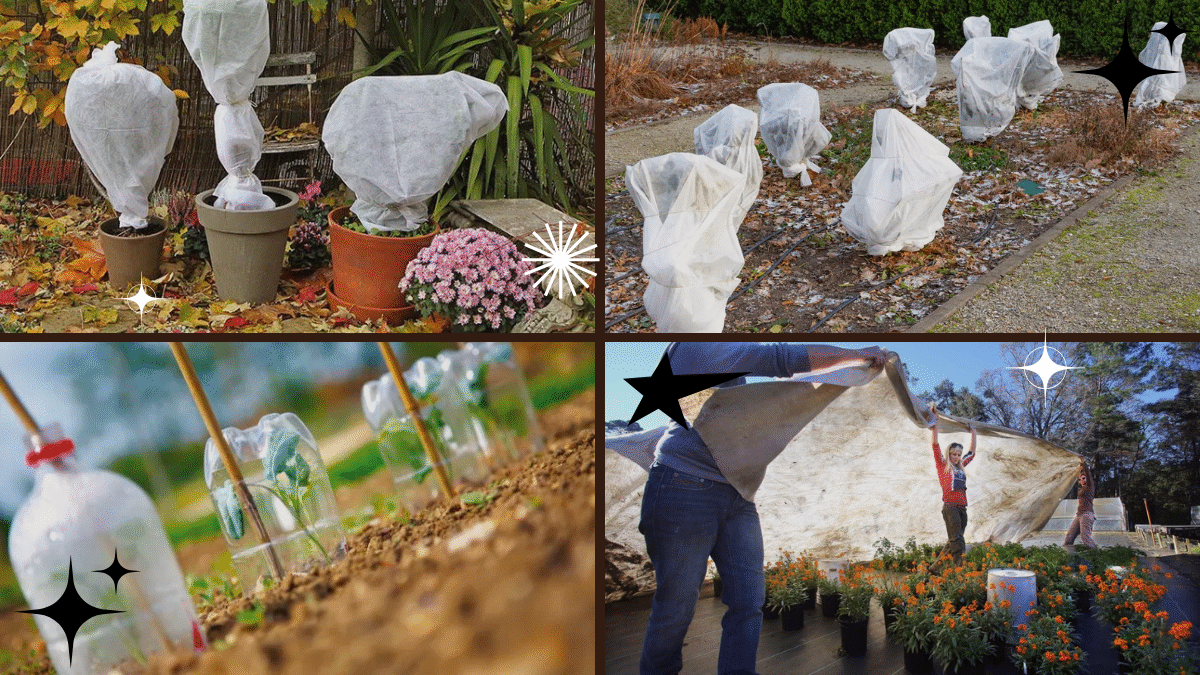As the seasons shift and temperatures begin to drop, every gardener faces a common challenge — protecting plants from freezing temperatures. Frost can cause severe damage to plant cells, stunt growth, and even kill your favorite flowers, vegetables, and shrubs overnight. The good news? With some thoughtful planning and practical methods, you can safeguard your plants and help them survive the cold months.
In this comprehensive guide, we’ll explore the science behind frost damage, identify which plants are most vulnerable, and outline simple yet effective techniques to protect your garden from freezing temperatures. Whether you’re a backyard hobbyist or a seasoned green thumb, these tips will keep your plants thriving, even when winter strikes.

Why Do Freezing Temperatures Harm Plants?
Understanding how cold weather affects plants is the first step in protecting them effectively. When temperatures fall below 32°F (0°C), the water inside plant cells can freeze, forming ice crystals. These crystals puncture cell walls, leading to dehydration, blackened foliage, wilting, and death of plant tissues.
Frost damage typically happens during:
- Clear nights when heat radiates away from the ground.
- Calm conditions with no wind to mix the air.
- Sudden temperature drops after mild weather.
Some plants naturally tolerate frost better than others, but many garden favorites like tomatoes, peppers, impatiens, and tropical plants need extra care when temperatures fall.

Which Plants Are Most Vulnerable to Frost?
Identifying which of your plants need protection is essential. Here’s a quick breakdown:
Highly Vulnerable:
- Tropical plants (banana trees, hibiscus)
- Tender annuals (marigolds, petunias, zinnias)
- Warm-weather vegetables (tomatoes, peppers, cucumbers)
- Houseplants placed outdoors
Moderately Vulnerable:
- Young perennials and newly planted shrubs
- Certain herbs (basil, cilantro)
- Citrus trees in pots
Cold-Hardy:
- Leafy greens (kale, spinach)
- Root crops (carrots, turnips)
- Many native and evergreen shrubs

How to Prepare Plants for Cold Weather
The best protection against frost damage begins before winter arrives. Here’s how to prepare your garden for freezing temperatures:
Know Your Frost Dates
Find out your region’s average first and last frost dates. This helps you plan when to start moving sensitive plants indoors or cover them up.
Harden Off Plants
Gradually expose tender plants to cooler outdoor temperatures over a week or two. This process, known as hardening off, helps build cold resistance.
Prune and Clean
Remove any dead, diseased, or weak growth in late fall. Damaged parts are more susceptible to frost and can sap the plant’s strength.
Mulch Generously
Apply a 2-4 inch layer of organic mulch (straw, shredded leaves, bark chips) around the base of plants. Mulch acts as insulation, stabilizing soil temperatures and protecting roots from freezing.

Practical Ways to Protect Plants from Freezing Temperatures
Let’s dive into proven, practical methods you can use to shield your plants from the cold.
Move Potted Plants Indoors
For houseplants, tender perennials, and tropicals in containers:
- Bring them inside before the first frost.
- Place them in bright, indirect light near windows.
- Reduce watering, as plant growth slows in cooler conditions.
Use Garden Fabrics and Covers
Covering plants is one of the simplest, most effective frost protection techniques.
Options include:
- Frost cloths
- Old bed sheets
- Lightweight blankets
- Burlap
How to Use Them:
- Drape covers over plants, making sure they reach the ground to trap warm air.
- Avoid letting fabric touch leaves directly to prevent damage.
- Secure covers with rocks or stakes.
- Remove covers during the day when temperatures rise above freezing.
Build Cloche or Mini-Greenhouses
A cloche is a small, transparent cover that protects individual plants.
DIY Ideas:
- Cut the bottom off a plastic soda bottle and place it over seedlings.
- Use clear plastic storage containers or glass jars.
- Build small hoop houses with PVC pipe and plastic sheeting for raised beds.
Water Before a Frost
Moist soil holds more heat than dry soil. Watering plants in the afternoon before an expected frost can help radiate heat overnight and slightly increase air temperature around the plant.
Add Heat Sources
In very cold conditions:
- Use string lights (non-LED) for gentle warmth in greenhouses.
- Place hot water bottles or jugs under covers overnight.
- Install outdoor heaters for larger gardens.
Always prioritize safety when using electrical or heat sources outdoors.
Mulch Heavily
For in-ground perennials and shrubs:
- Mound mulch around the base of the plant.
- Use straw, bark chips, pine needles, or shredded leaves.
- Keep mulch 1-2 inches away from the stem or trunk to prevent rot.
Move Sensitive Plants Together
Group pots and tender plants in a protected area, like against a south-facing wall or inside a covered patio. These spots retain more heat overnight.
Plant Strategically
When planning your garden, position frost-sensitive plants:
- Near walls or fences (which reflect heat)
- Under the canopy of larger trees (which provide insulation)
- In raised beds (which drain cold air better than flat ground)
How to Revive Frost-Damaged Plants
If your plants suffer frost damage:
- Don’t prune immediately. Wait until after the danger of frost has passed and new growth appears.
- Remove dead or mushy foliage and stems.
- Water and fertilize moderately to encourage recovery.
- Protect surviving plants during future cold snaps.
Preventing Future Cold Damage
To reduce long-term frost risks:
- Choose more cold-hardy plant varieties.
- Install windbreaks (like fences or hedges) to buffer cold winds.
- Invest in a cold frame or greenhouse for overwintering delicate plants.
- Maintain healthy plants through the growing season; strong, well-fed plants resist cold damage better.
Conclusion
Protecting plants from freezing temperatures may seem daunting, but with a little preparation and the right techniques, you can keep your garden thriving even when the frost comes calling. From simple fabric covers to strategic planting and clever heat sources, there are many ways to shield your precious plants and give them a fighting chance against the cold.
As a gardener, being attentive to changing weather and having a few frost-protection tricks up your sleeve ensures your garden stays lush and lively year after year. And there’s nothing quite like the satisfaction of seeing your flowers bloom and your vegetables flourish in spring, knowing you helped them weather the winter chill.





Leave A Comment